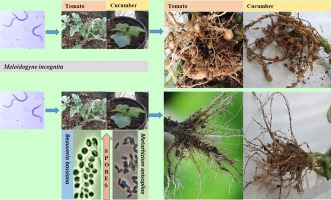For more than 20 years now, I’ve been a gardener, and I can say from my personal experience that root-knot nematodes pose a significant threat to tomatoes. Regardless of precaution, they can cause a promising harvest to turn into a poor yield making many growers look for the root knot nematode treatment. Today, I am proud to present a case for a revolutionary biological treatment system with which farmers are now undertaking a major shift in the fight against nematodes.
The Nematode Challenge
Root-knot nematodes are rated among the most harmaly plant pathogens; they reduce the yield of plants and estimate that the global loss regarding agricultural crops is 157,000,000,000 US $ per year. In my tomato gardens, I used to struggle with telltale signs: Slow growth, foliage chlorosis, and those swollen gnarl called galls at the tips of the roots, after which these pests are named. Some of the conventional chemical nematicides I am familiar with were unkind to the beneficial components in the soil and had me looking for an environmentally friendly option.
The Biological Solution: Nema Pro
Of course, this is where Nema Pro comes in: this is a biological nematicide activated by Purpureocillium lilacinum, which has formerly been referred to as Paecilomyces lilacinus. Dr. Sarah Chen, a microbial agricultural expert from the University of California, explains: Actually, Purpureocillium lilacinum is a natural management tool that can help bring nematode pests under control. Instead, this useful fungus goes straight to the nematode eggs and females, thus making it perfect for natural pest control.
To know more about how to get rid of root knot nematodes, visit Novobac.
How It Works
The active ingredient in Nema Pro, Purpureocillium lilacinum, works through a fascinating process:
1. It has been suggested that the spores adhere to the surface of the nematode eggs and begin to colonize itself on it.
2. They get into the egg shells through an enzymo-litic process
3. They sterilize the females of the nematodes in order to control their multiplication.
4. They remain dispersed in the soil to ensure valuable ongoing protection lasting for several years.
Scientific Backing
One study from the Agricultural Microbiology Lab at Cornell University shows that by one growing season, Purpureocillium lilacinum is capable of whittling down the root-knot nematode population by a third or even three-fourths. Dr. James Martinez, lead researcher, notes: ‘The good thing with this biological control agent though is its capacity to get into the soil ecosystem, and give repeated control of pests, without aiding the harm of good organisms.’
Application and Results
In my experience, the best results come from an integrated approach:
1. Soil Preparation:
– Test soil pH (optimal range: 6.0-6.5)
– Ensure good drainage
– Add organic matter
2. Nema Pro Application:
It is best used at the beginning of the growing season.
Follow recommended dosage (common rate is 2-4 kg/ha)
Preserving stok moisture for the favoutable growth of the fungi
3. Cultural Practices:
– Rotate crops
: The following is still effective in reducing the sources of infection:
Keep the distance between plants appropriate
Cost-Effectiveness
However, any grower who may fear the paecilomyces lilacinus price at first might agree to the fact that the advantages of the fungi replenish the investment many fold in the long run. It is however important to note that these applications can offer protection right from planting season to maturity, and that the fungus has the capacity of producing billions of spores within the soil, thereby eliminating the need for the product to be reapplied elsewhere.
Sustainable Agriculture as a Perspective
Dr. Elena Rodriguez from the Sustainable Agriculture Institute emphasizes: As it pertains to looking where to eliminate root knot nematodes, using bioaecology like; Purpureocillium lilacinum is the future of farming. This provides a good way of exercising this control and at the same time promoting soil health as well as soil biodiversity.
Looking Forward
After implementing Nema Pro in my tomato gardens, I’ve observed:
– Healthier root systems
– Improved plant vigor
– Higher yields
– Better fruit quality
– Decreased call on chemical inputs
Such a change towards biological products like Nema Pro is perhaps one of the greatest transformations in agriculture. Having a gardening background together with a focus on Sustainable Agriculture, I believe and witness a rise in these electrified innovations. They show that pest courses can be controlled without disrupting the sensitivity of our soil food chain system.
However, it is always important to understand that management of nematodes is a slow, progressive process that should involve use of an entangled approach. If implemented alongside other bio control programs such as Nema Pro, growers can work towards improving cultural practices thereby creating sustainable and productive growing conditions for our crops and for the environment.

